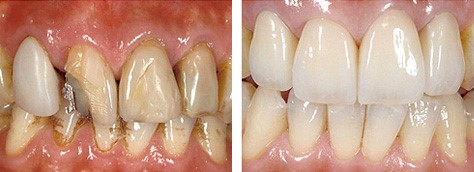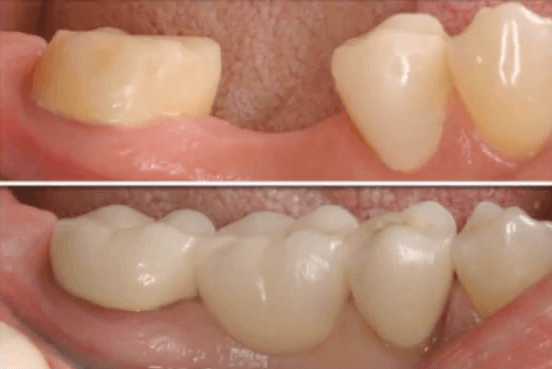Both crowns and bridges are placed to restore extensive decayed tooth structure or tooth structure lost due to fracture, and bridges function to replace missing or extracted teeth. Crowns and bridges are both fixed in place (do not come in and out like partial and complete dentures) and are strong enough to withstand heavy biting and chewing. While older crowns and bridges often contained a metal framework, new ceramic materials offer restoration of teeth with high strength, much improved aesthetics, and avoid the irritation of the gums that the metal framework often caused, leading to recession.
Crowns are put in place to protect the tooth from any further decay or fractures that cannot be restored with fillings. The crown encases the entire tooth protecting its underlying structure.

Bridges are used to replace missing or extracted teeth. It is important to replace the missing tooth to avoid any shifting of the surrounding teeth and to restore all of your biting and chewing function, as well as to cosmetically restore any spaces and gaps in your smile. When placing the bridge, the dentist uses the adjacent teeth as anchors, called abutments, and the bridge is cemented to these adjacent teeth. Because it is cemented to the adjacent teeth, a bridge is fixed in place and does not come in and out like a denture or partial denture.

